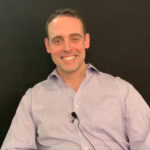Behind the Scenes of a Movement
In our last issue, you heard from two of SAGE’s visionary founders, Doug Kimmel and Chris Almvig. As part of our reflection on SAGE’s 40 Fierce Years, we’re taking you behind the scenes with five individuals who were integral to establishing SAGE and shaping its central place in LGBTQ+ history.
THE YEAR WAS 1978.
It had been nine years since the Stonewall Riots, and just five years since the American Psychiatric Association removed homosexuality from its list of medically recognized mental disorders. It was not safe to be out in the workplace. It was dangerous just to walk the streets as an openly LGBTQ+ person. The nation was deeply divided on racial issues and women’s rights, and the AIDS crisis was just around the corner.
We don’t often hear the names of the leaders who worked behind the scenes to make progress happen. It took countless brave and bold individuals to continue to push for LGBTQ+ equality and carve out a space for LGBTQ+ elders during these perilous years. Our interviewees—some of whom were part of SAGE’s early years and others who took part decades later—give insight into what it takes to build a movement for LGBTQ+ pioneers.
HAROLD KOODEN
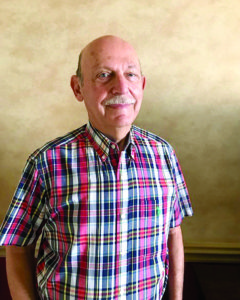 Harold Kooden remembers the moment SAGE evolved from an idea to a reality. “Chris [Almvig] was in school for social work with my boyfriend at the time, and the three of us were talking. For her masters, she mentioned that she wanted to outline an organization that would deal with LGBTQ+ elders. This would be the first organization of its kind,” Kooden says. “I strongly supported this idea and said I would help her financially, and put her in contact with Doug Kimmel, who was an out gerontologist at the time. It was from these connections that she would soon form a group, which then took on the name of SAGE.”
Harold Kooden remembers the moment SAGE evolved from an idea to a reality. “Chris [Almvig] was in school for social work with my boyfriend at the time, and the three of us were talking. For her masters, she mentioned that she wanted to outline an organization that would deal with LGBTQ+ elders. This would be the first organization of its kind,” Kooden says. “I strongly supported this idea and said I would help her financially, and put her in contact with Doug Kimmel, who was an out gerontologist at the time. It was from these connections that she would soon form a group, which then took on the name of SAGE.”
And so it began. SAGE would become the first and largest organization dedicated to improving the lives of a population that had never been in the spotlight—LGBTQ+ elders.
“I didn’t have any idea that SAGE would become what it is now,” he says. “If you can think of what things were like back then, in the late ’60s and early ’70s, the concept of what we now know as SAGE was beyond our ability to think about. Even the idea of developing an organization just dealing with gay elders was a shock for many people. It came at the right time for those of us creating professional organizations specifically dealing with LGBTQ+ issues.”
Kooden emphasizes that the creation of SAGE did not begin in a vacuum. It was the result of decades of bottled up tension, hostility, and resistance toward government-endorsed LGBTQ+ brutality, he says. “There was a groundswell happening in professional organizations as well as community groups, and they built upon each other,” says Kooden. Kooden was chair of the American Psychological Association’s Task Force on the Status of Lesbian and Gay Psychologists, board member of New York State’s Martin Luther King Jr. Institute for Nonviolence, and co-chair and founder of the National Association of Lesbian and Gay Psychologists, among other esteemed titles.
The LGBTQ+ movement struggled in its early years to find its footing in an era where racial justice and women’s issues were also at the forefront of the national dialogue, Kooden says.
“This was a time when intersectionality was beginning to be discussed as a way to bridge the dissension in our community. SAGE, in working with other developing LGBTQ+ organizations, was critical in these forward-thinking discussions.”
AMBER HOLLIBAUGH
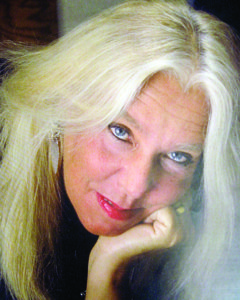 Amber Hollibaugh looks back on SAGE’s early years from a unique vantage point, having been both a SAGE Board member in the early 1980s and a full-time SAGE employee in the late 1990s. “We were trying to figure out how to build a queer movement, because the movement itself wasn’t built yet,” said Hollibaugh about SAGE’s first several years. “Mapping SAGE’s growth from its very beginning to its current moment is really a remarkable trail of the growth of the movement. It gives a template of what the issues were and what had to be done to confront them.”
Amber Hollibaugh looks back on SAGE’s early years from a unique vantage point, having been both a SAGE Board member in the early 1980s and a full-time SAGE employee in the late 1990s. “We were trying to figure out how to build a queer movement, because the movement itself wasn’t built yet,” said Hollibaugh about SAGE’s first several years. “Mapping SAGE’s growth from its very beginning to its current moment is really a remarkable trail of the growth of the movement. It gives a template of what the issues were and what had to be done to confront them.”
Hollibaugh, a filmmaker, writer, and political activist, came to SAGE to fill a void that had been missing.
“Ken Dawson [then executive director of SAGE] was a close friend. I was in my forties at the time, and he wanted to try and figure out how to put a younger person on the Board, because he felt as though there wasn’t an intergenerational engagement,” Hollibaugh says. “Women’s rights, race issues, and conversations about class were radical at the time. I brought conversations about these issues to the SAGE Board. I was part of a small cohort of women, including Edie Windsor, who fought to make women’s issues a priority within the LGBTQ+ movement.”
When SAGE began, the biggest roadblock was funding, says Hollibaugh. Because of the overall anti-LGBTQ+ political climate, SAGE often failed to find supporters who would fund anything having to do with the LGBTQ+ movement. “Sadly, HIV/AIDS allowed us to build a much larger economic infrastructure, because we had no choice,” she says. “We had to do it in order to take care of our own community.”
STAN NEWMAN
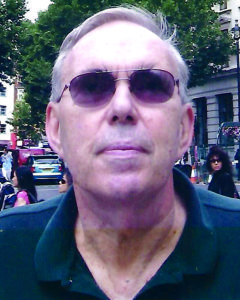 During the early years of SAGE, when fundraising was an uphill battle, the organization stayed afloat because of people like Stan Newman, who became involved with SAGE just a couple of years after its inception. He joined the development committee and worked to raise funding at a time when it seemed almost impossible. He has since been a major contributor to SAGE’s growth.
During the early years of SAGE, when fundraising was an uphill battle, the organization stayed afloat because of people like Stan Newman, who became involved with SAGE just a couple of years after its inception. He joined the development committee and worked to raise funding at a time when it seemed almost impossible. He has since been a major contributor to SAGE’s growth.
“In those years, SAGE was just a social worker and two helpers. It really was a shoestring operation,” says Newman. “It was beyond hard to raise funding—a $500 contribution was a big deal. The political climate was anti-gay, and being active in anything related to being gay or contributing was a form of coming out. You didn’t talk about it; you didn’t make a point of it. Gay worlds were quiet.”
But that would soon change.
“The real breakthrough of fundraising was the AIDS epidemic. When HIV/AIDS came, people weren’t hiding anymore. They were coming out to participate, and they were writing checks.”
MICHAEL SELTZER
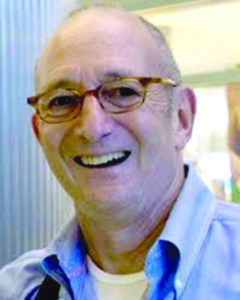 LGBTQ+ activist Michael Seltzer was another driving force behind SAGE’s evolution and growth. In fact, Seltzer helped SAGE receive its first grant.
LGBTQ+ activist Michael Seltzer was another driving force behind SAGE’s evolution and growth. In fact, Seltzer helped SAGE receive its first grant.
“In the early years, I counted each grant as an LGBTQ+ victory,” said Seltzer. “I knew Ken [Dawson] from activist circles, and also knew David Rothenberg, the founder of the Fortune Society. Together we formed a support group for LGBTQ+ leaders who were in the nonprofit field. Ken was among those who were the first generation of LGBTQ+ people working at an LGBTQ+ organization. He was a trailblazer. The idea of being an LGBTQ+ professional was foreign at the time. Today we take that for granted.”
Seltzer saw SAGE come into its own, with a goal that was unusual for its time: “Ken, from the very beginning, envisioned SAGE as something that could be national. He really stood out as someone with a larger vision.”
Before the AIDS crisis, “We were basically financed from individual contributors. Other civil rights and human rights organizations were getting foundation grants, but in the late ’70s and early ’80s, we weren’t. Funding our community was put solely on our backs,” Seltzer says.
Like many nonprofits, SAGE is still dependent on individual contributors. But as it has grown into the national and intergenerational organization that Ken Dawson envisioned, it has also grown increasingly able to win grants to fulfill its mission.
ACHEBE POWELL
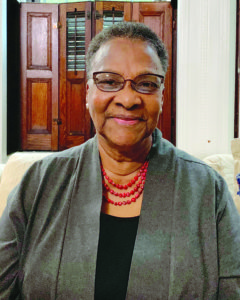 Achebe (formerly known as Betty) Powell, one of the founders of the Astraea Lesbian Foundation for Justice, was connected to SAGE in the 1990s by Amber Hollibaugh. As a consultant, Powell worked to bring racial diversity to SAGE, which meant having a racially diverse workforce as well as reaching and serving racially diverse LGBTQ+ elders.
Achebe (formerly known as Betty) Powell, one of the founders of the Astraea Lesbian Foundation for Justice, was connected to SAGE in the 1990s by Amber Hollibaugh. As a consultant, Powell worked to bring racial diversity to SAGE, which meant having a racially diverse workforce as well as reaching and serving racially diverse LGBTQ+ elders.
“Similar to many other organizations at the time, SAGE came to a point where it needed to deal head-on with race. I was tasked with trying to help them assess diversity needs. There were growing pains, but we needed to be in there where the wounds were.”
In her work, Powell emphasized the power of intersectionality. “All of our movements—the black civil rights movement, the women’s movement, and the LGBTQ+ movement—were so important to link to each other. It’s critical for the long game. It’s about human rights, and we need to work in that context to make this movement much larger than just us,” Powell says.
“It’s the continuing work of our current and future leaders to think in this visionary way, because we have to secure the rights of us all on this planet. We can never stop bending the arc of history toward justice—for all of us.”






